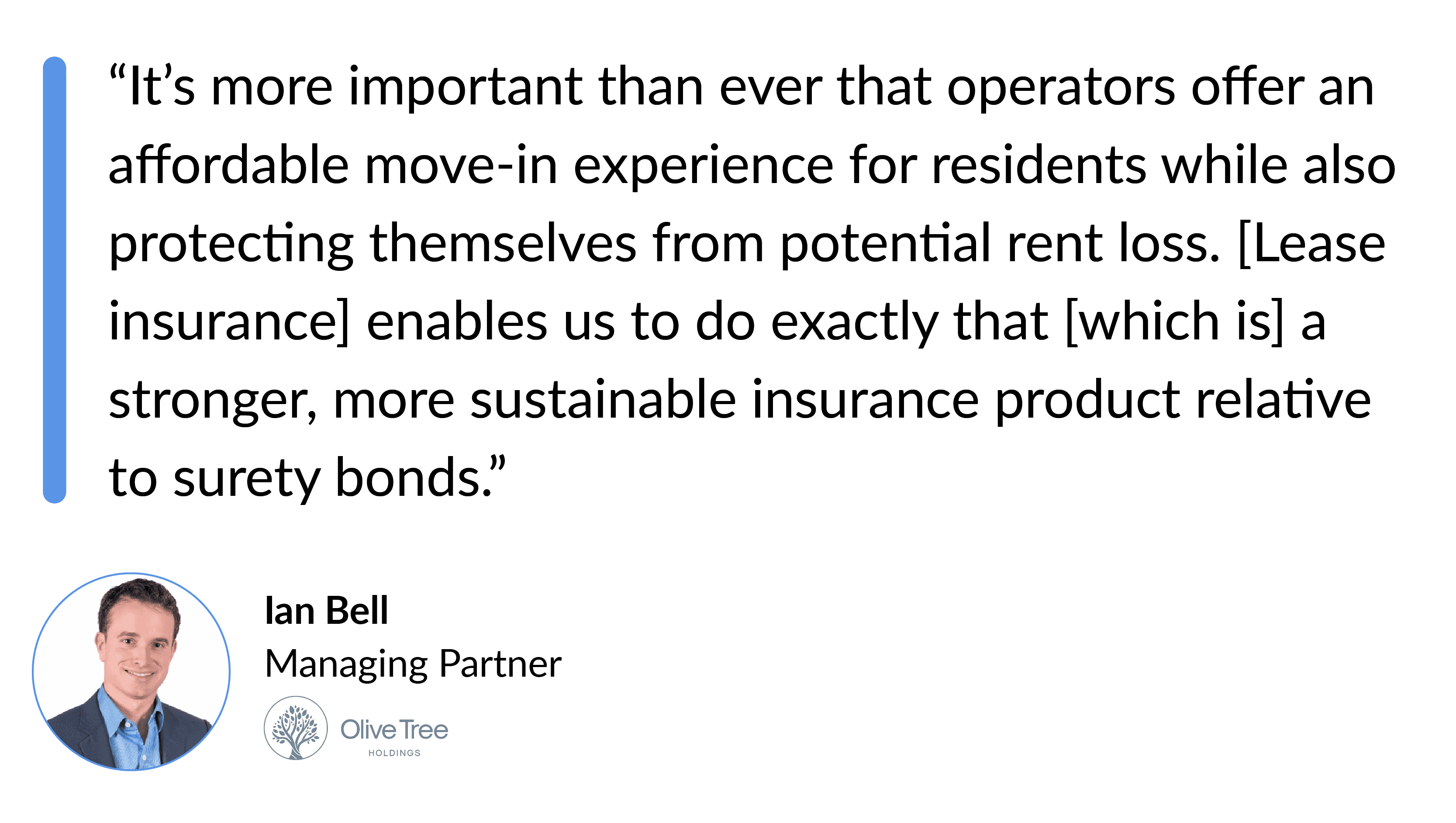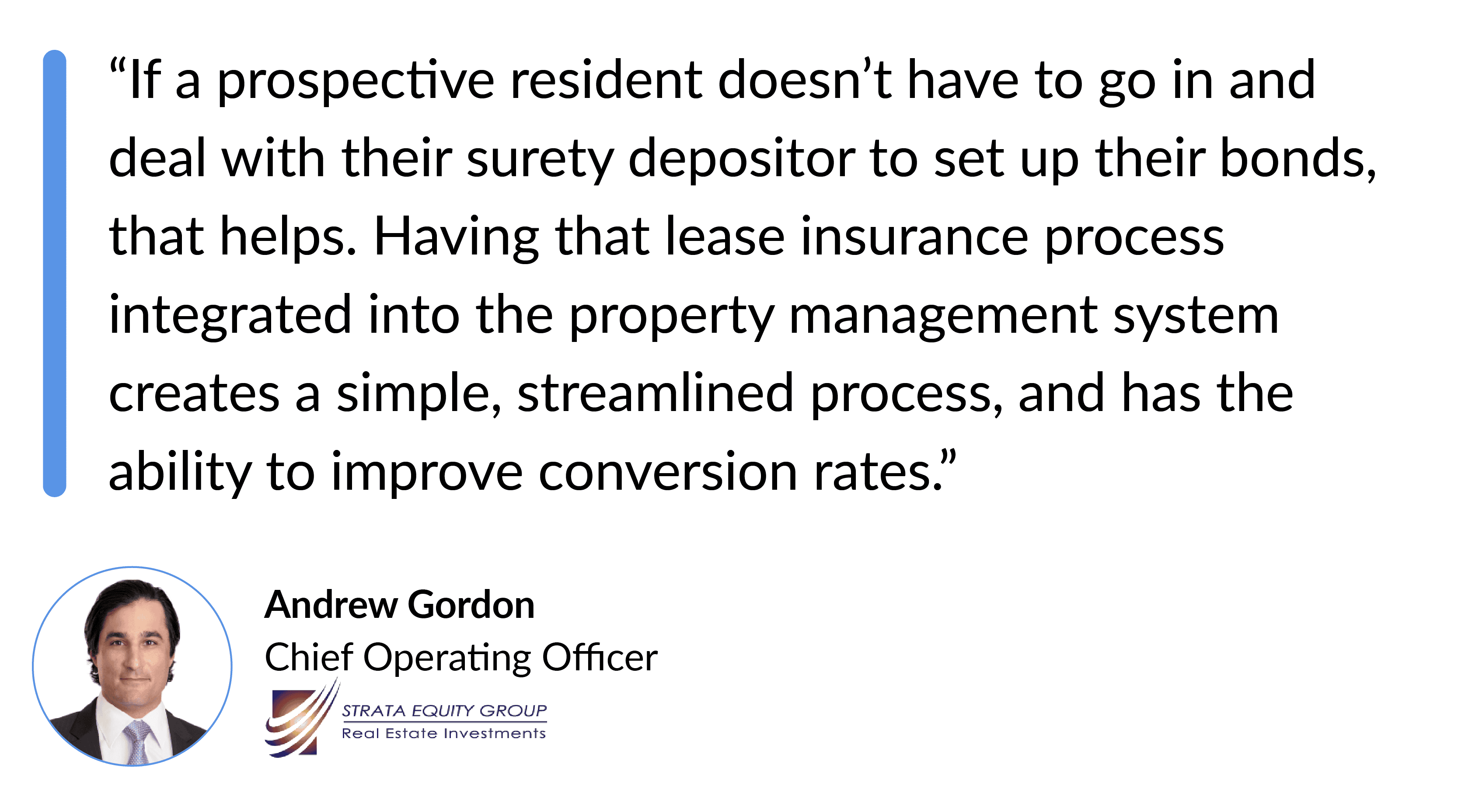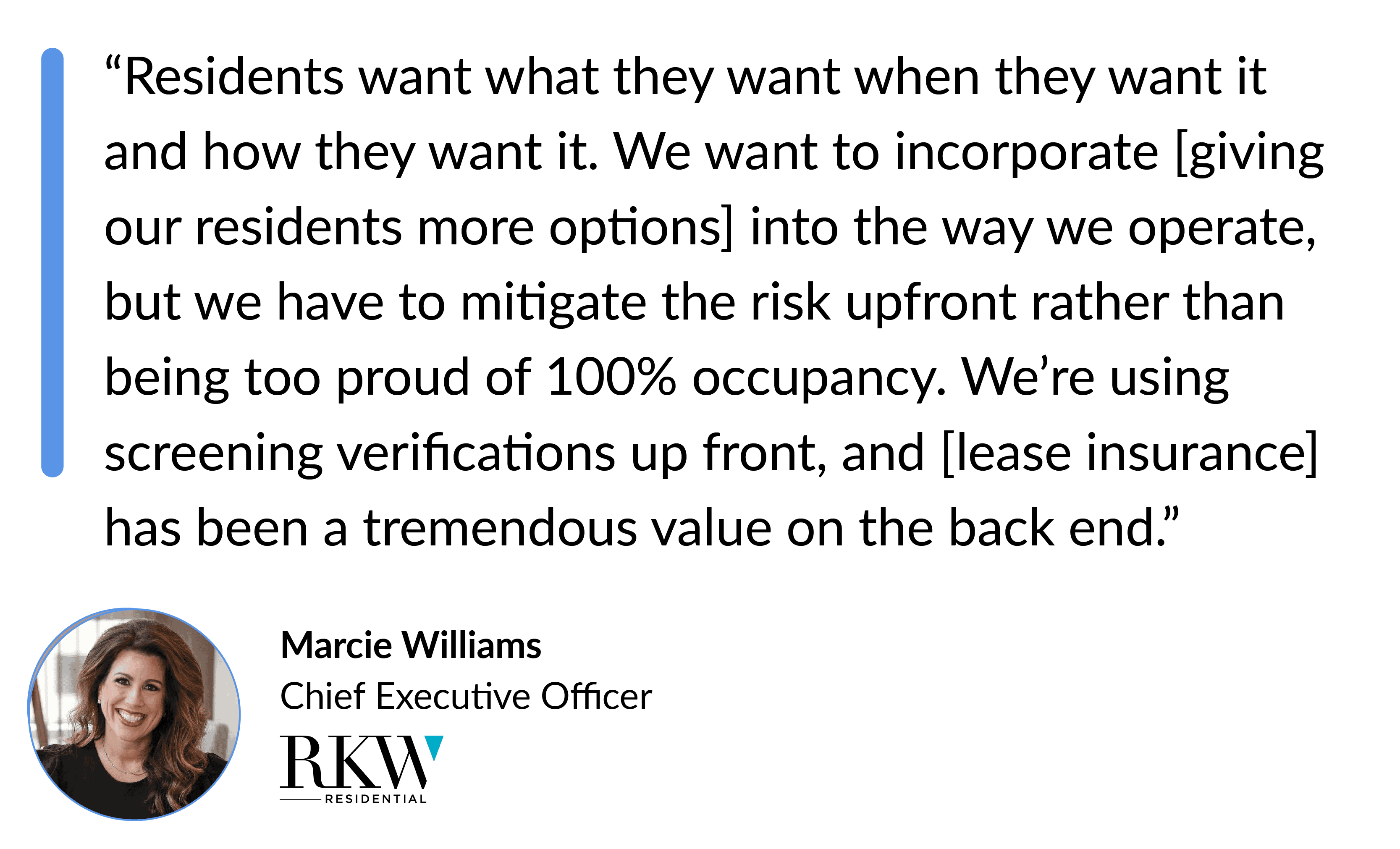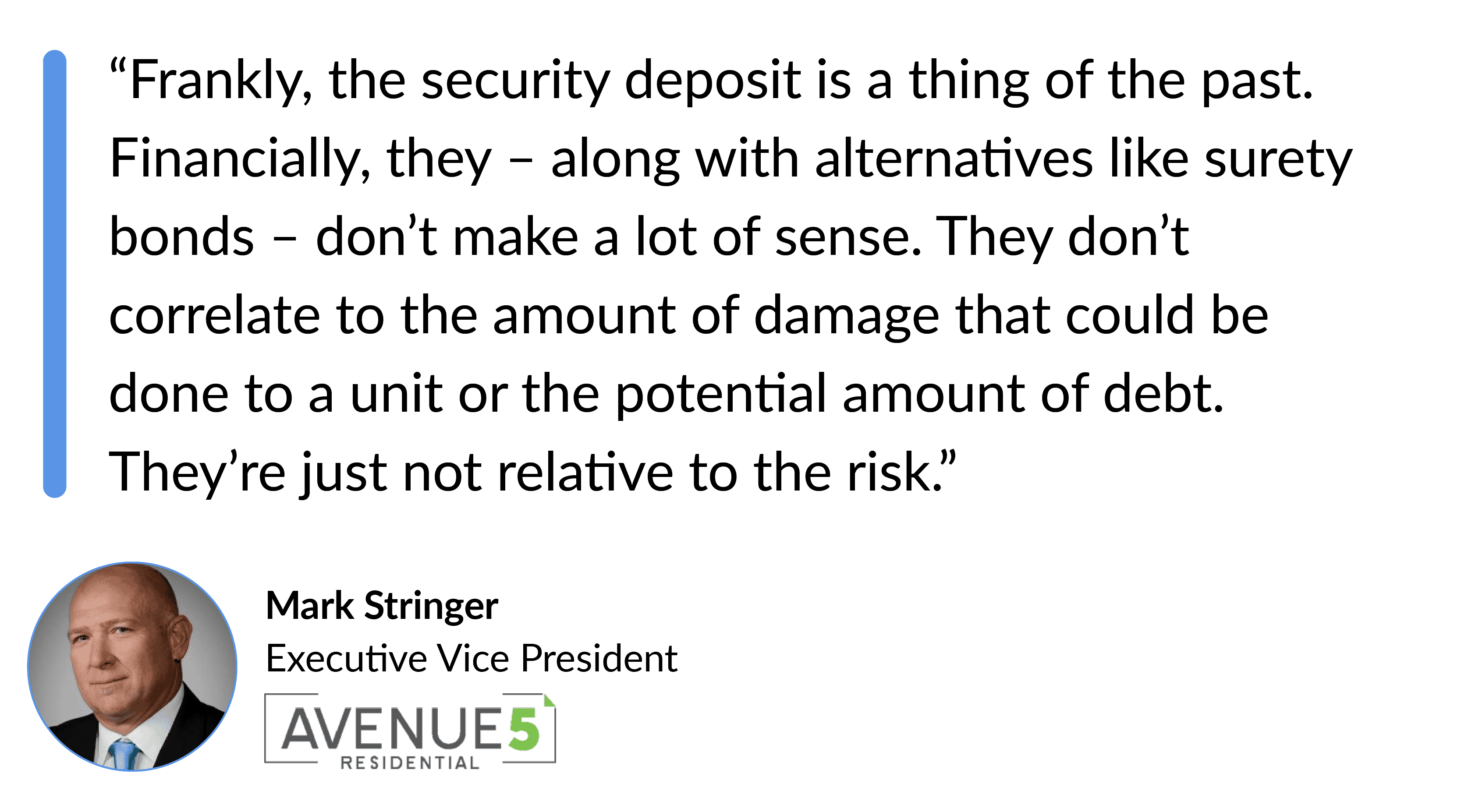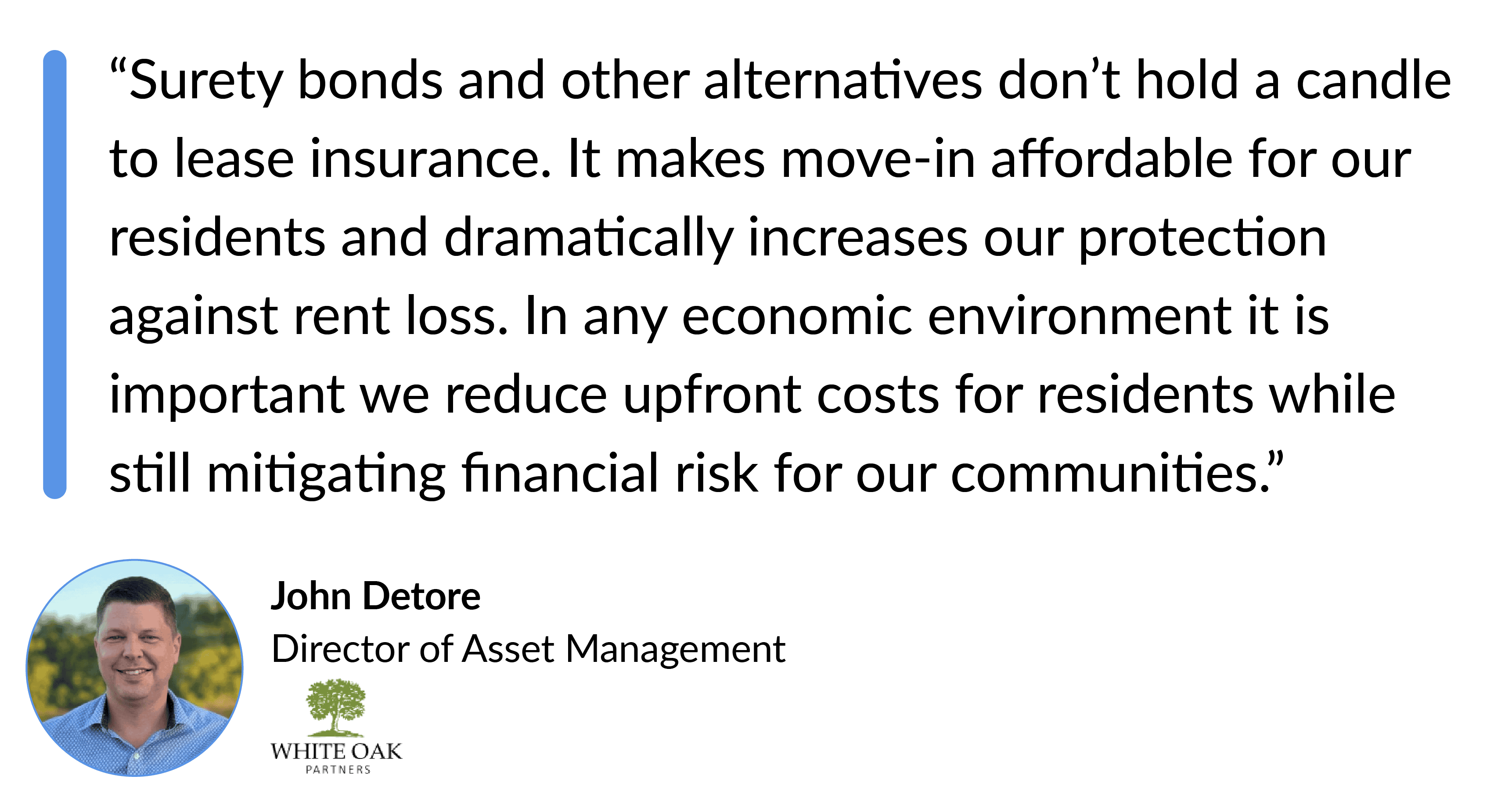3 Use Cases for the Multifamily Shift to Smarter Loss Protection
Multifamily historically has been slow to embrace technology, but the industry countered that notion with its recent tech renaissance during the pandemic. Almost overnight, tech solutions went from last resort options to first-strike weapons in the industry’s effort to solve emerging issues. These technologies may have been a long time coming, but their fast-tracked implementation demonstrates multifamily can move with agility when need be.
A Growing Multifamily Trend: Avoid, Transfer, & Mitigate Risk With Insurance Technology
Spurred by today’s economic uncertainty, there is another dramatic shift taking place in multifamily – the trend towards insurance technology to manage risk and protect against financial loss. Between resident screening, renters insurance, and lease insurance, savvy operators now leap at the opportunity to engage different risk management tools to avoid, transfer, and mitigate risk throughout the lease lifecycle.
Resident screening helps avoid risk by identifying fraudulent applications and risky renters, and renters insurance programs enable operators to transfer risk to resident policies—both integral to operators’ risk management strategy. Now, more and more are looking to mitigate risk by implementing lease insurance to solve the long-standing failures of security deposits. With lease insurance, operators reduce their exposure to potential loss caused by residents and improve property performance.
In particular, there are three use cases driving operators to replace traditional security deposits with lease insurance as a better loss protection strategy:
- Move-In Affordability for Residents
- Modern Risk Mitigation Solutions for Apartment Communities
- Maximized Revenue & Smarter Risk Assessment for Operators
3 Reasons Multifamily Is Moving Away from Traditional Security Deposits & Surety Bonds Towards Lease Insurance
1. Move-In Affordability for Residents
Economic uncertainty and housing supply shortage accelerated the housing affordability issue for apartment renters nationwide. With 58% of Americans living paycheck to paycheck, a majority of Americans lack the funds to cover an unexpected $1,000 expense. In addition, full-time minimum wage workers can’t afford rent in 93% of U.S. counties, while over half of all US apartment households spend nearly a third of their income on rent.
Record-breaking rent growth has made renting an apartment particularly expensive, especially security deposit costs. This creates a large financial burden for renters but also puts operators in a bind—either they charge deposits to protect against loss and suffer low lease conversion rates or offer lease concessions to attract residents but sacrifice proper protection in the process.
And while surety bonds offer move-in affordability for renters with low-cost monthly payments, these deposit alternatives are a crude form of insurance that offer insufficient protection against rent loss and damage that have poor resident adoption. In this case, operators sacrifice long-term revenue to maintain physical occupancy levels in the short-term.
On the other hand, lease insurance removes the upfront cost posed by security deposits and adequately protects operators against rent loss and damages, all in a resident-friendly format. Instead of using a blanket security deposit amount or a low-cost, high-risk surety bond program, operators can seamlessly deploy lease insurance to both create more affordable move-ins and unlock smarter risk prediction and historical data at the property level to determine optimal insurance coverage. This leads to a better resident experience, higher lease conversion, and increased economic occupancy.
“It’s more important than ever that operators offer an affordable move-in experience for residents while also protecting themselves from potential rent loss. [Lease insurance] enables us to do exactly that [which is] a stronger, more sustainable insurance product relative to surety bonds.” – Ian Bel, managing partner at Olive Tree Holdings
2. Modern Risk Mitigation Solutions for Apartment Communities
Surety bonds and other deposit alternatives have sought to replace outdated, traditional deposits, but even as security deposit legislation spreads nationwide, it’s becoming more apparent how these partial solutions actually introduce new types of risk that create financial, administrative, and regulatory burdens for operators as well as negative leasing experiences for residents.
For example, surety bonds leverage off-system application processes and manual claims forms, creating more administrative work for onsite teams and a clunky process for residents, thus leading to less than 50% resident adoption rates. New deposit laws also present new restrictions and increased deposit administration, adding unnecessary complexity to regulatory compliance. In addition, deposit alternatives leave residents fully liable for claims paid to their property, resulting in displeased renters, negative online reviews, and potential move-out disputes.
“If a prospective resident doesn’t have to go in and deal with their surety depositor to set up their bonds, that helps. Having that lease insurance process integrated into the property management system creates a simple, streamlined process, and has the ability to improve conversion rates.” – Andrew Gordon, Chief Operating Officer at Strata Equity Group
Lease insurance, however, is a modern loss protection solution that replaces traditional deposits and alternatives integrating within the native workflow from the point of application all the way through the move-out claims process. This means property teams are relieved of administrative strain and expedite claims in the leasing office, residents get a hassle-free lease experience with no out-of-workflow applications or surprise deposit deductions, and owners reduce bad debt and increase asset value and NOI.
“[Lease insurance] has proven to be the long-term solution to remove deposits [by delivering] a seamless, accessible, and affordable move-in experience, greater risk mitigation, higher bad debt recovery, and stronger NOI – all things any property management company needs to get right from the beginning.” – Jennifer Staciokas, Executive Managing Director of Property Management for Western Wealth Capital
3. Maximized Revenue & Smarter Risk Assessment for Operators
Balancing the need to maximize NOI with heightened renter affordability concerns along with strong multifamily occupancy rates has prompted many apartment operators to offer concessions (i.e., deposit-free move-ins) to remain competitive.
However, this scenario has negative implications, including insufficient protection when a resident doesn’t pay rent or causes substantial damage to their apartment home. With no way to assess risk and subsequently cover losses, an operator’s economic occupancy diminishes.
“Residents want what they want when they want it and how they want it. We want to incorporate [giving our residents more options] into the way we operate, but we have to mitigate the risk upfront rather than being too proud of 100% occupancy. We’re using screening verifications up front, and [lease insurance] has been a tremendous value on the back end.” – Marcie Williams, CEO at RKW Residential
While some operators opt to utilize surety bonds as a deposit alternative, the risk of economic loss persists. Consider the loss ratio formula of surety bonds: a surety bond program contributes on average $50 in premium to the denominator of the loss ratio equation. This amount is insufficient compared to the average amounts that must be paid out in claims. In this case, the surety bond carrier loses money while the bonding company continues to take on new risk.
Following the pandemic, the industry is likely to experience an influx of claims outflows for months, or even years, to come. As a result, surety bond pools will deplete, leaving operators exposed to a high level of risk and account balances (i.e., bad debt). For this reason, operators need a risk mitigation solution like lease insurance that effectively assesses risk and absorbs account balances to maximize revenue.
“Frankly, the security deposit is a thing of the past. Financially, they – along with alternatives like surety bonds – don’t make a lot of sense. They don’t correlate to the amount of damage that could be done to a unit or the potential amount of debt. They’re just not relative to the risk.” – Mark Stringer, Executive Vice President for Avenue5 Residential
Risk Prediction Is the Long-Term Solution for Smarter Loss Protection
In today’s economic climate, savvy operators are looking for better risk mitigation solutions and stronger loss protection strategies that address the use cases outlined above: renter affordability, modern risk mitigation solutions, and risk assessment capabilities. This is why more and more are shifting away from expensive, traditional, risk-prone security deposits and surety bonds to affordable, innovative, and data-driven insurance technology solutions, like lease insurance.
“Surety bonds and other alternatives don’t hold a candle to lease insurance. It makes move-in affordable for our residents and dramatically increases our protection against rent loss. In any economic environment it is important we reduce upfront costs for residents while still mitigating financial risk for our communities.” – John Detore, Director of Asset Management at White Oak Partners
Ultimately, the most promising aspect of lease insurance lies in the value of risk prediction. With predictive risk monitoring at its core, LeaseLock’s lease insurance platform can analyze ledger balance trends and billions of risk data points sourced from PMS and third-party data to project potential resident loss and optimize coverage accordingly.
Rather than relying on an arbitrary security deposit amount or partial solutions (e.g., surety bonds) that add layers of risk to leasing, LeaseLock wields the power of data and AI to adapt insurance coverage so operators can rely on optimal revenue protection across their entire portfolio–far more than what’s provided by traditional deposits and bonds.
Conclusion
Operators today need to better manage loss and drive asset value. While lease insurance programs provide stronger loss protection strategies that optimize asset performance, not every program is created equal—operators need a smarter, more sustainable risk mitigation solution. Only lease insurance steeped in AI and data analytics to effectively predict risk can offer this.

